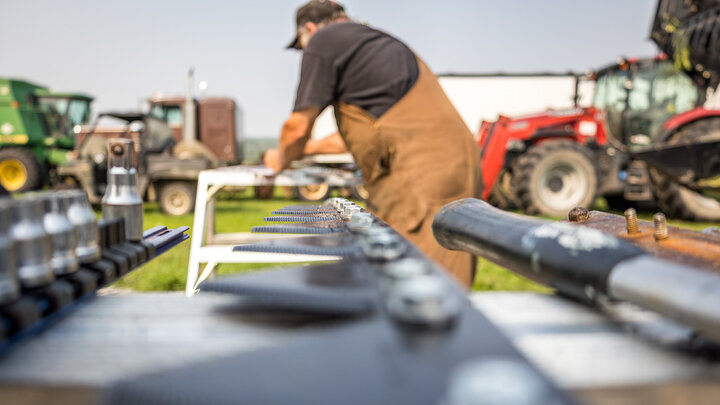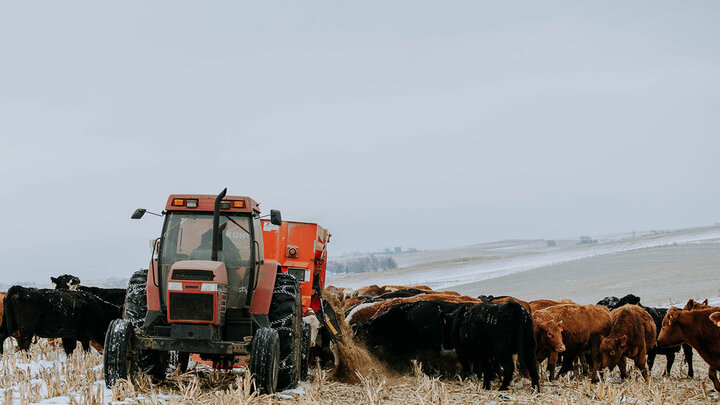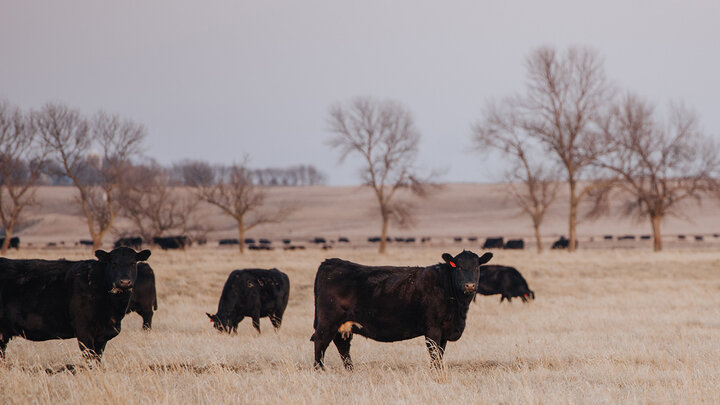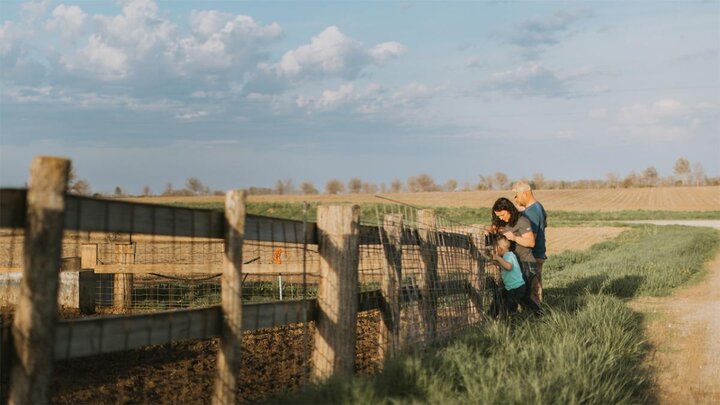Listen: Nebraska FARMcast
Expanding acres or livestock can lower costs, but bigger farms also face labor strains, management challenges, and hidden expenses. On this episode, Tim Meyer explores how family operations can recognize those limits and balance growth with long-term sustainability.
At a Glance
- Economies of scale occur when growth lowers the cost of production.
- Diseconomies of scale emerge when expansion adds costs and inefficiencies.
- Family farms may need middle management as they grow, which adds expense without always increasing revenue.
- Replication of smaller, efficient units can sometimes be more effective than one large operation.
- Open communication across generations helps balance growth and avoid pitfalls.
This article was first published Oct. 1, 2025 as part of the Department of Agricultural Economics' "Cornhusker Economics" series.
One of the benefits of working in the Agricultural Economics Department at the University of Nebraska-Lincoln is the opportunity to engage with the many extraordinary faculty in the department. This is very important for employees with positions like my own. As a Professor of Practice (Teaching Faculty), I believe it is important to maintain ties with the industry and producers. One way that I accomplish this is by engaging with my coworkers. For instance, listening to and then conversing with Professors Lubben and Walters after a recent interview regarding the farm bill and the 2026 market outlook will help me shape classroom activities for the remainder of the semester.
Some of these conversations/engagements produce explicit action. Others percolate, and it takes far longer to realize the benefit. One example would be the attitudes and opinions students enter the classroom with. These biases could be the result of hands-on experience, discussions around the dinner table, or perhaps other classroom work. In many cases, these beliefs or values are based on incomplete information. Many times, their beliefs are not incorrect but rather oversimplify the complicated nature of farm production.
Through discussions with my extension coworkers, we often see a connection between owner/operators and the students attending my class. The example this article features is the belief that farms must get bigger, both by asset size and revenue, in order to achieve success. The remainder of this article will discuss when that is true, but will give multiple examples of when the opposite holds. Finally, the article will end with an argument for why communication amongst generational management is of the utmost importance.
Economies of Scale
The belief that getting bigger and increasing production volume results in greater overall profit does have legitimacy. Farming in Nebraska is a fixed-input-intensive industry, and increasing acres farmed allows producers to spread these fixed costs over a larger number of bushels (or other units of production)—directly lowering the cost of production and therefore increasing profits.
More efficiently utilizing fixed inputs isn’t the only way that economies of scale can be achieved on a family farm or ranch. Imagine a family that has four siblings. If all four siblings desired to be part of the next generation of family farming and planned on working together, their post-high school training should be strategic. While I would hope all four were interested in Agricultural Economics/Agribusiness, it would make sense for only one of them to major in the field. Training in Agronomy, Animal Science, and Agricultural Engineering would complement the Ag Econ degree. This type of scenario would only work if the farm were big enough to support all four financially; if so, their specialized training’s impact could both increase revenue and decrease the cost of production.
Diseconomies of Scale
One of the most basic ways to illustrate both economies and diseconomies of scale is the cost of building storage facilities. A ten-foot by ten-foot storage facility has 40 linear feet of material and 100 square feet of space. Increasing the linear feet by 50% (a 15-foot by 15-foot facility) increases square footage by 125% to 225 square feet. In theory, this relationship continues infinitely, but ignores physics as well as logistics. At some point, the storage facility isn’t a basic building any longer. A civil engineer is needed, along with specialized materials and construction methodologies. Finally, there’s some point where the size of the facility creates its own issues.
Imagine if the proliferation of car washes in Lincoln were achieved through larger car washes instead of opening a new car wash on every corner. A car wash that could service 500 cars per hour may have some natural economies of scale, leading to cost savings. However, the logistics of getting that many cars through one facility, not to mention the plumbing challenges, would far outweigh the benefits.
This example is illustrative of the concept of replication and minimum efficient scale. In production, there’s some size that just makes sense. Fast food restaurants, coffee shops, and drugstores are prime examples. Any big city visitor will likely encounter the unique opportunity to see three Starbucks locations from one vantage point. In that case, operating three distinctly different production facilities is more cost-effective than one giant coffee shop.
The Need for Middle Management
As a farm business gets bigger and past the size needed to take advantage of economies of scale, expansion may necessitate the need for middle management. Farm owner/operators must have a wide variety of skills and knowledge, and at some point, having trusted employees is not sufficient. One single owner/operator cannot always be physically present to make necessary, crucial decisions. To overcome this issue, additional managers must be hired.
There’s nothing explicitly wrong with a middle manager. What leads to diseconomies of scale is the fact that a middle manager’s wage is an additional expense, but their presence does not actually facilitate additional production or revenue. A more specific example would be the need to have an equipment manager. It’s not hard to imagine a farm so large that a full-time manager of equipment operations would be needed.
Replication in Farm Businesses
The premise/focus of this article has been on family farming. How then can generational farmers expand, while taking advantage of economies of scale, while avoiding the complexities (and added expenses) of getting larger?
First, older and current generation managers must be transparent and open about management decisions and operations. Once all stakeholders are involved in strategic management, creative solutions for farm expansion can be imagined and implemented. In the case of the four siblings mentioned earlier, four different operations could be created. While managing different operations, the expertise of each owner-operator could be shared. For example, the ag economist of the group could utilize their specialized skills to establish a marketing plan for all four units. In return, the ag engineer could manage irrigation technology for the group and so on.
Summary
Teaching ag students has unique challenges and opportunities. Far more ag students have production experience than business economics students. While these experiences can highlight economic theory, they sometimes create barriers. Rules of thumb, like always needing to expand, or never using debt financing, oversimplify the complex scenarios faced by farm managers. Open dialogue amongst generations is a necessary first step in taking advantage of economies of scale where appropriate, while simultaneously staying lean and avoiding the pitfalls of growing too big too fast.
Timothy Meyer
Associate Professor of Practice
Department of Agricultural Economics
University of Nebraska-Lincoln
tmeyer19@unl.edu
402-472-2314




